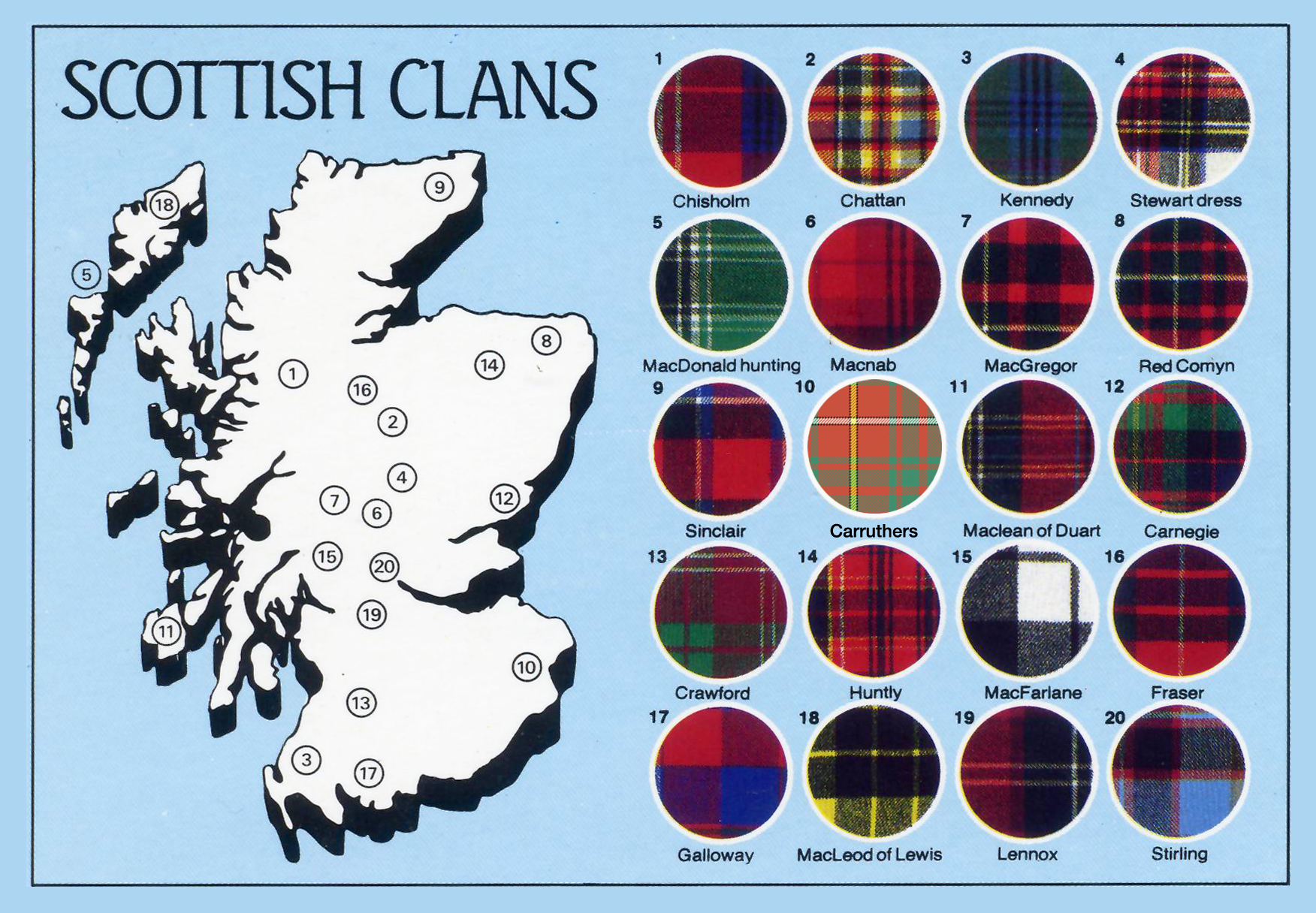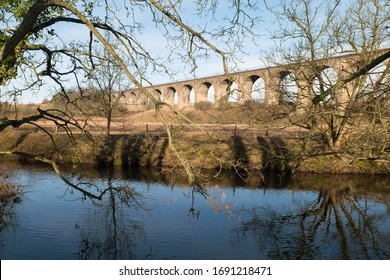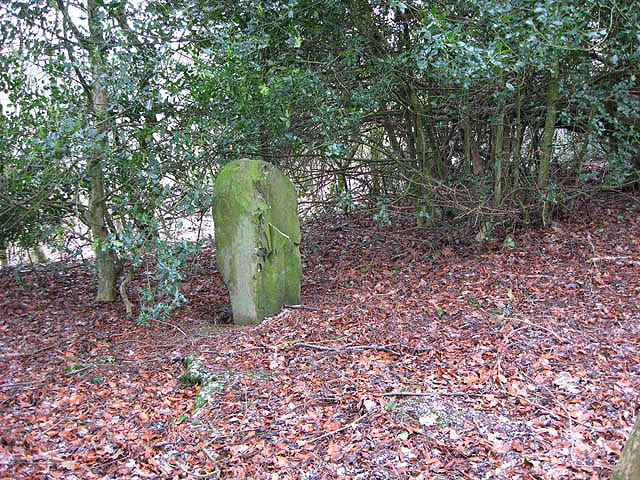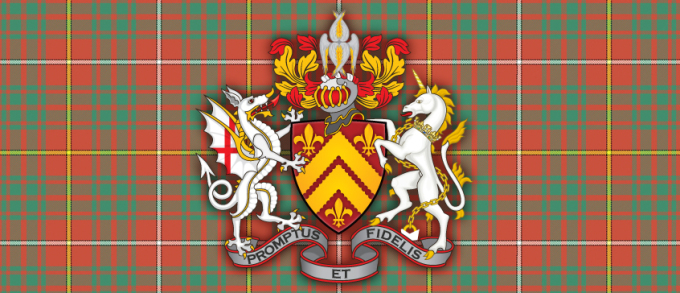
HISTORY OF LIFE ON THE SCOTTISH BORDERS
CARRUTHERSLAND
A short account of the conditions of the Scottish Border a before the Union may perhaps be of interest as introduction to the history of an old Dumfriesshire family. This sketch consists largely of extracts and quotations from well-known authorities, and refers more particularly to the Western
Marches.
Even from the earliest historical times, the Borders were the scenes of constant conflicts; no sooner had the country been overrun and settled by one race of invaders than another invasion took
place with fresh bloodshed; struggle succeeded struggle, till by the end of the twelfth century the inhabitants consisted of an extremely mixed race, descended chiefly from Picts, Scots, Saxons, Norwegians, Danes, and Normans.

After the Norman Conquest of England, large numbers of Saxons fled into Scotland, and later on various powerful Normans also settled there and obtained large estates, both on the English and
Scottish borders.
There had been frequent wars between England and Scotland in the twelfth century, but Richard I of England, before starting for the Crusade against the Saracens, made such friendly arrangements with Scotland that for a period of nearly one hundred years there were very few outbreaks between the two countries. This condition of affairs lasted until the death of Alexander III in 1294.
By that time numbers of nobles owned large estates in the Border counties of both England and Scotland. Friendly relations prevailed and frequent intercourse between the two countries was
carried on without let or hindrance. The similarity of language also helped to promote cordial relations. The Scotch language, from early times up to the end of the fourteenth century, was almost
the same as Northern English, though with a number of words derived from races who still spoke Gaelic, or Celtic, after it had been abandoned in all England except Wales.
Later on, ·when Scotland became the ally of France during the’Wars of independence, a large number of forms and “Words ·were adopted from the French. These must be distinguished from the
Norman French already introduced into both England and Scotland by the Norman Conquest.
On the death of Alexander III the relations between the two countries became entirely changed. Edward I trumped up old claims to the feudal sovereignty of Scotland, which had been
renounced by Richard I, and determined to make himself master of the country. Buckle graphically describes the result, as follows:
“In 1290, Edward I determined to avail himself of the confusion into which Scotland was thrown by disputes respecting the succession to the crown. The intrigues which followed need not be
related; it is enough to say that in 1296 the sword was drawn and Edward invaded a country he had long desired to conquer. But he little recked of the millions of treasure and the hundreds of thousands of lives which were to be squandered before that war was over. The contest that ensued was of unexampled length and severity, and in its sad course the Scotch, notwithstanding their
heroic resistance and the victories they occasionally gained, had to endure every evil which could be inflicted by their proud and insolent neighbor. The darling object of the English was to subjugate the Scotch, and if anything could increase the disgrace of so base an enterprise it would be that having undertaken it, they ignominiously failed.”

The English invaded Scotland, burnt and destroyed the whole country as far north as Firth of Forth, in 1296, 1298, 1310, 1314,1322, 1336, 1346, 1355, and 1385. During that time the country
was constantly overrun in and castles and towns laid waste.
The agricultural laborers either fled or were murdered, and the fairest parts of Scotland became a wilderness, overgrown with briers and thickets. Thousands died from want and starvation, and on
the authority of contemporary authors, some of the starving inhabitants were even driven to cannibalism.
The inhabitants of the Borders being thus prevented from tilling the ground, or from any other peaceful employment, were driven to inaccessible places in the hills and moor, and were forced
to take cattle and- other provisions where they could get them.
Forming themselves into strong bodies of armed men, all mounted, they made constant forays into the neighboring parts of England, burning and pillaging wherever they ,vent and returning home by
the most secret paths and byways, known only to themselves.
The following extract is from Leslie’s account of the Borders, and taken almost verbatim:
“They get their living by stealing and reiving, but they are averse to shedding blood, but are not. particular whether they steal from English or Scottish. They live chiefly on flesh, milk, and· cheese; they do not care much for bread and little for wine. Their buildings are merely huts of sods and branches and they do not care much if they are burnt. They also build strong castles, all made of earth called Peils, which cannot be burnt, and are difficult to destroy.
“Some of the great nobles do not openly take a share in the booty, but they do not like to break with the reivers, as they are useful in time of war.
“When the princes of the country come against them, they take to the hills and morasses, and from there to the woods and rivers. Their horses are light and active, and being unshod they can go
over the bogs and ·marshes where other men could not follow. They . .have a great · contempt for those who go on foot, therefore they are all horsemen, and provided they have good horses and
clothes for their wives, they care little about their household gear.
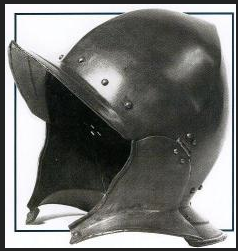
“They believe that in times of necessity, by the laws of nature, all goods are common, but that slaughter and such like injuries are against the laws of God. They are very revengeful, and will resent
any injury against any of the clan. But they are true to their word and hold any of their number in scorn who would go back on his word.
” They are still good Catholics and are fond of singing about the
exploits of their ancestors and are never more fond of praying than
when driving a prey.
“The man who can best lead a foray and knows all the by-paths is considered a man of great parts, and is held in great honor.”
Froissart speaks of their qualities as soldiers as follows:
“The Scots are both hardy and much inured to war. When they make their invasions into England they march from twenty to twenty-four leagues without halting by day and night. They are all on horseback except the camp followers. They carry no provisions of bread or wine, for their habits of sobriety are such in times of war that they will live for a long time on flesh half sodden and drink river water without wine. They have no use for pots and pans for they dress the flesh of the cattle in the skin. They take none with them, being sure to find plenty.

“Under the flaps of their saddle each man carries a broad plate of metal; behind the saddle a bag of oatmeal. When they have not eaten too much and their stomachs appear weak and empty, they place the plate over the fire, mix with water their oatmeal and make a cake or biscuit which they eat to warm their stomachs. It is therefore no wonder that they perform a longer day’s work than other soldiers.
” The knights are well mounted on large bay horses; the men on little Galloway hackneys, which they never tie up or dress but turn immediately, after the day’s march, into the pastures.” The Scots seem to have used as war instruments of music long cows’ horns,-see Froissart.
“The Scots made such a blasting and noise with their horns, that it seemed as if all the devils in hell had been there.”
These horns must not be confused with bagpipes; according to Francesque Michel, bagpipes were introduced into Scotland from either England or France, where they had been in common use for
a long time. They seem to have been first used in war during the sixteenth century . More modern authors seem to think differently. The sound of one horn after another sounds just like bagpipes, and the first type of bagpipes had horns attached to a cow hide, instead of pipes/
In these warlike days foreign trade was small and manufactures of any kind scarcely existed. Even the weapons and armor which they used had to be imported from abroad. There were numerous laws against exporting horses, cattle, and all provisions into England, but trade with France and Flanders seems to have been encouraged. The only trade of any importance seems to have been salting salmon, and there are numerous Acts regarding the industry. There were laws fixing the close season; another passed in 1469 prohibits all fishing for three years in tidal waters, to prevent depletion. Other laws dealt with size of barrels and branding of same.
The rivers of Esk and Annan were exempted from the close season on account of the proximity of the English making such regulations useless. The selling of salmon to Englishmen was prohibited except the English bought it in Scotland for “English gold.”
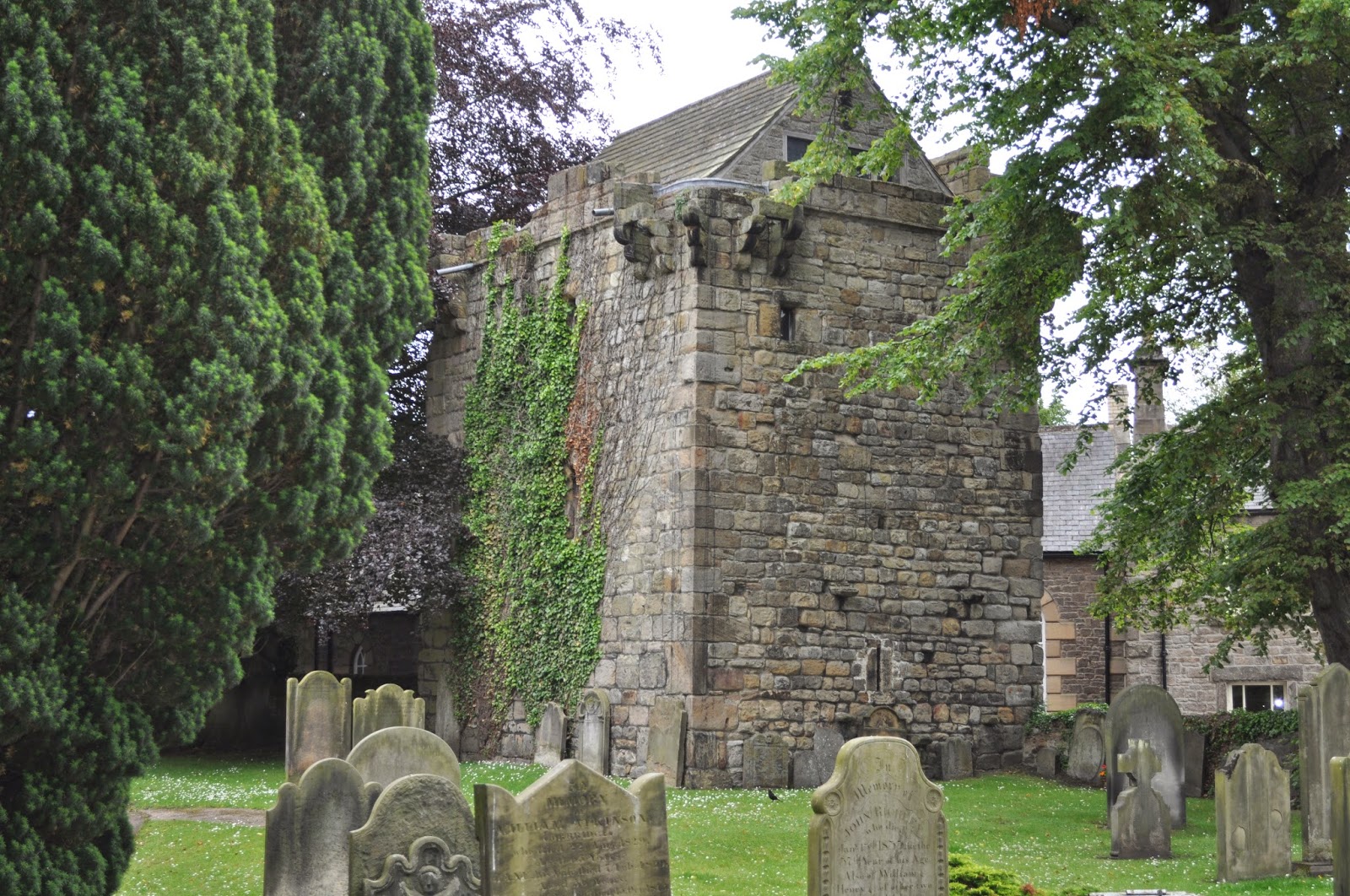
The punishment for breaking the fishing laws was, for first offense, 10 to 40 shillings, and for third offense, death. It may well be imagined that on the borders little or no attention was paid
to these laws, or in fact to any others. Thus the idea that no one can tell a Carruthers what to do.
There also seems to have been a small trade in hides and codfish. How little the trade of Scotland amounted to is shown by the fact that at the time of the Union, in 1707, the total export trade of
Scotland was under £100,000. Up to the seventeenth century, rents were chiefly paid by feudal service and in kind. Fletcher of Saltourne, writing in 1690, says that the poor state of the country
was largely due to all rents being paid in kind.
The continued wars with England had greatly weakened the power of the king and proportionately strengthened the powers of the nobility .
The Borders had to bear the first brunt of all English invasions, and so well were they prepared and so used to war that in twenty–four hours from 10,000 to 20,000 men, all armed and mounted, could be raised and assembled by the wardens. When the English invasions became less frequent the Scottish kings made desperate efforts to reduce the power of the nobles and generally to restore order in the Borders. Their services as guardians of the Marches against the English were less often required, and the constant feuds and depredations on the more peaceable inhabitants in the Middle
Counties of Scotland became intolerable to the Scottish monarchs, and numerous Acts were passed to bring the Borders into order.
The Border and Highland clans were usually classed together in these Acts, probably on account of their general lawlessness, but in constitution and habits the Highland and Lowland clans were
altogether different.
In the Highlands the entire clan was absolutely at the sole command of the chief.
“The chief could determine what king, what government, what religion, his vassals should obey; his word was the only law they respected; a complete devotion to his interests, an absolute obedience to his commands, was the first and almost the single article of their moral code.”
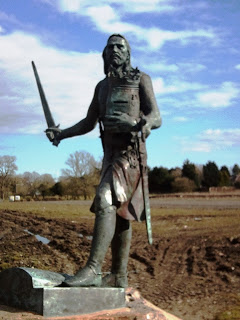
In the Borders the conditions of things were entirely different; no traces of any such blind devotion to clan chiefs or leaders can be found. The mixture of the races on the Borders produced a race that was conspicuous for its dogged independence and dourness and insubordination to all authority. The Lairds and Barons were the Chiefs for their family or clan. They stood with each other, never against.
The need for mutual protection, the expectation of mutual benefits to be obtained, and the obedience of a feudal tenant to his landlord probably formed the basis of the Border clans.
The Normans and Saxons who early settled on the Borders introduced the feudal system, traces of which still existed in Scotland till the middle of the nineteenth century.
Robertson remarks that “many years after the declension of the feudal system in the other kingdoms of Europe, and when the arms and policy: of princes had everywhere shaken or laid it in ruins, the foundation of that ancient fabric remained in a great measure firm and untouched in Scotland.
” Thus, the purely clan system of the Highlands was largely interfered with by the great
power of the· feudal barons. Up to the middle of the fifteenth century, the Carruthers were
all-powerful in Dumfriesshire. After their fall the Douglases were the powerful strength of the chief families. Some of the most powerful families were able to escape death by leaving and settling in Ireland. Some of the families that stayed were the Berries, Maxwells, and Johnstons.
Prior to that, the long feuds between the Maxwells and Johnstons, which lasted with short intervals for nearly one hundred years, culminating in the battle of Dryfe Sands, 1593, men of the same clan
were to be found fighting on both sides, especially amongst the lrvings, Carruthers, Bells, and Armstrongs.
In 1547, Lord Wharton burnt the town of Annan and the whole of Annandale, and amongst a large number of others the following heads of branches of clans, including both Johnstons and Maxwells,
surrendered to him and became security for those under them.
There are many similar records of the heads of families becoming security for their immediate dependents, but there are no contemporary records of any one chief on the West Marches ever having given such bond for the whole number of branches of same clan.
In this respect the Border clans are in marked contrast to the Highlands, where the clansmen followed their chiefs as one man.
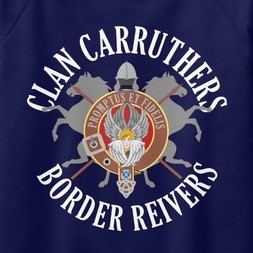
Since the lowland clearance, it is extremely unlikely that any of the new smaller clans, since they all fled to Ireland, such as the Irvings, Bells, and Carruthers, had a rely on The Barons or the Lairds that stayed in Scotland to act as a single chief whom they recognized. The fact that so many different clans inhabited the same valley made any such control almost impossible. But then again, no one could tell them what to do.
The Lairds of Johnston probably more nearly resembled the Highland chieftains than any others on the Western Marches. McDowall says, “By the middle of the sixteenth century an immense number of families bearing the Johnston name ,were to be found in Annandale, all counting kinship with the Lairds, their relation towards him being in every respect more like that borne by Highland clansmen to their chief than the feudal vassalage of Norman origin that generally prevails throughout the Lowlands.” By the end of the sixteenth century, it was very hard to find any Carruthers, Bells, Irvings in the lowlands at all.

There is an old bond of man rent in existence, date 1555, by which twenty-six different Johnstons bind themselves to follow the Laird of Johnston. The mere fact that such a. bond was thought necessary shows the radical difference between the Highland and Lowland clans.
After the union of the crowns in 1603, the Borders ceased to be the scene of constant outbreaks. The men who had made war their only business did not easily accommodate themselves to the
new condition of affairs, and their condition became most precarious; the wardens of England and Scotland acted together, and cattle thieving and raiding were put down with a strong hand.
The Grahams of Debatable Land were sent in a body to Ireland; numbers and numbers of the outlaws were banished from the country. Hundreds of men accustomed to no other trade but war went to the Continent as soldiers of fortune. Thus, during the thirty years war in Germany, 1618-1648, many of the most prominent generals on both sides came from Scotland. There were Scotch regiments in Germany, Holland, France, and Sweden.
But the troubles of the Borders were not yet over. The attempt to introduce the Episcopacy into Scotland proved as difficult a task as the former attempt to conquer the country. In no part of Scotland were the religious persecutions more severe than on the Borders and West of Scotland, and most abominable outrages and cruelties were perpetrated by Caverhouse, Dalzell, and his followers.
The revolutions in 1689, when William III became King of England and Scotland, and the political union of the countries in 1707, at last brought relief to the blood-stained district. Even then, the
inhabitants, being so long accustomed to a wild, warlike life, were unable to settle down to peaceful pursuits and to take advantage of the free trade with England and the colonies which the Union
gave to Scotland. It was not until late in the eighteenth century that the Borders began to recover from the effects of centuries of turmoil and trouble, and gave signs of becoming what it now is, one
of the fairest and most prosperous districts in the United Kingdom.
The old inhabitants of the Borders were a wild and lawless race, the product of the times they lived in, but it was largely to their courage and perseverance that the Scotch were able to so long maintain their independence, and finally to demand, and at last secure, honorable and fair terms of union with England, a union which resulted in immense benefits to both countries and more particularly to the Borders.
From the house of William James Carruthers – Baron of Carruthers
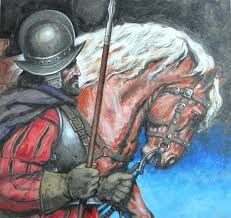
“The knights are dust
And their good swords are rust;
Their souls are with the Saints we trust.”
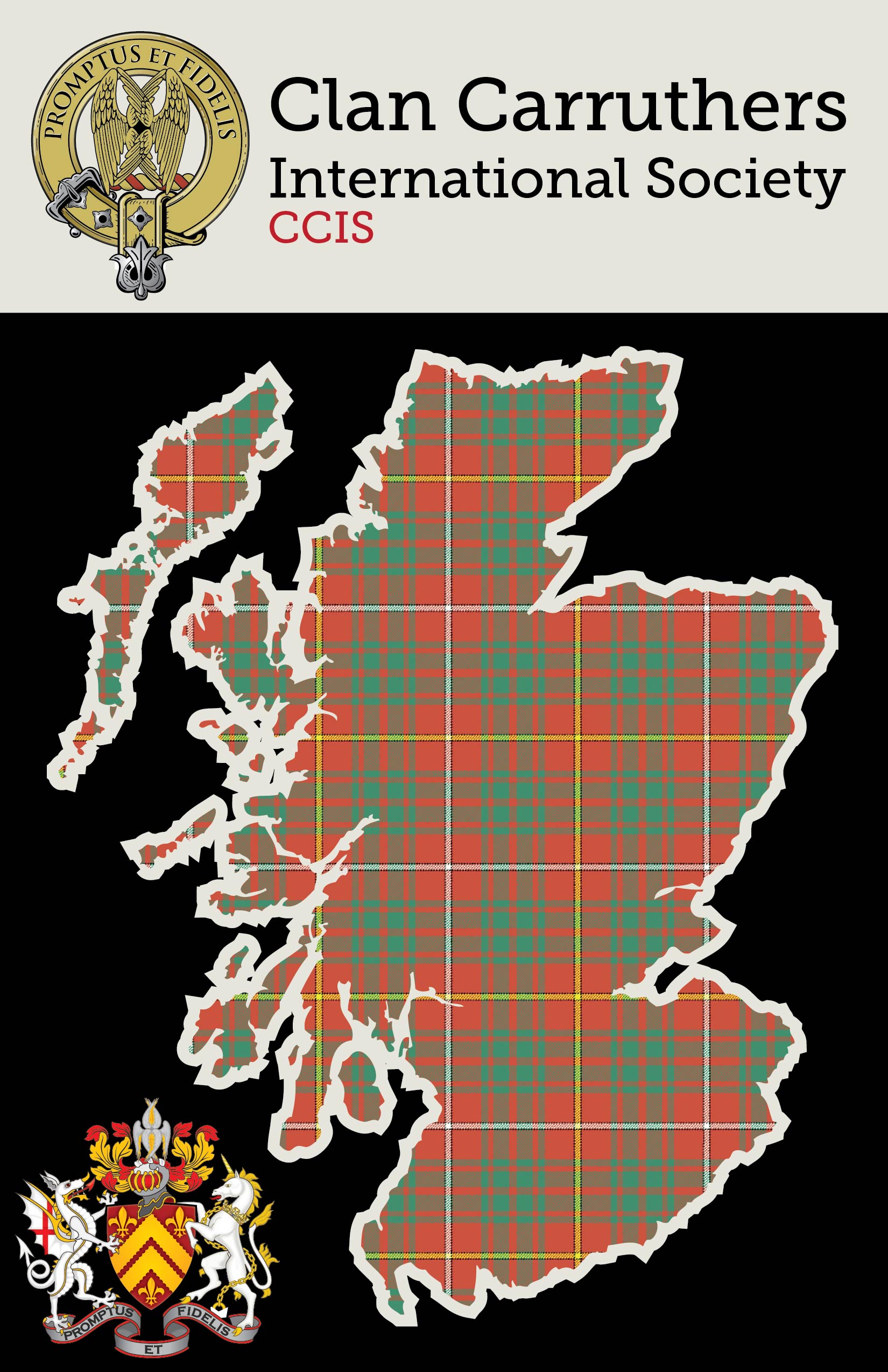
OFFICIAL AND OLDEST SCOTTISH CLAN CARRUTHERS
CLAN OF OUT ANCESTORS – SINCE 1983
SCOTTISH CLAN – IRISH CLAN – NORSE CLAN
Preserving Our Past! Recording Our Present! Informing Our Future!
The Ancient and Honorable Carruthers Clan ccis
carruthersclan1@gmail.com clancarruthers1@gmail.com
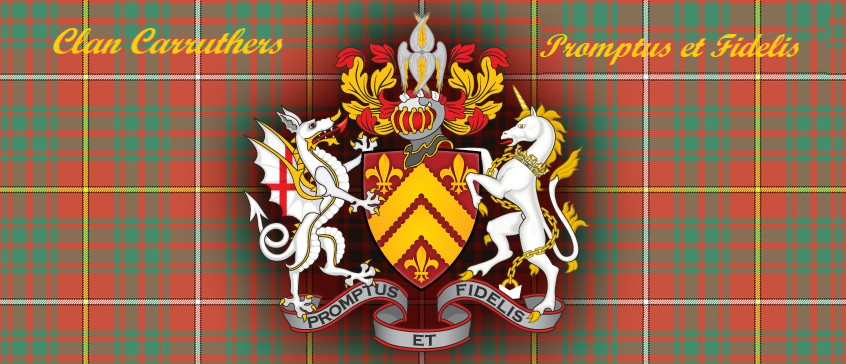
CLAN CARRUTHERS INT SOCIETY CCIS HISTORIAN AND GENEALOGIST

You can find us on our main facebook pages at :
SILVER WINGS-https://www.facebook.com/CarruthersClanLLC/
GOLD WINGS – https://www.facebook.com/carrutherscarrothers.pat.9
CLAN CARRUTHERS FAMILY HISTORY – https://www.facebook.com/CarruthersClan
CLAN CARRUTHERS CCIS – https://www.facebook.com/groups/3878691252182714
CLAN CARRUTHERS INT SOCIETY- https://www.facebook.com/groups/394653845137709
CLAN CARRUTHERS – BORDER REIVERS – https://www.facebook.com/groups/434959914239094
Disclaimer Ancient and Honorable Carruthers Clan International Societ
Register of Privy Council of Scotland, vol. 2, pp. 48-49.
2 Calendar of Scot.tish Papers, Bain, 1547-1563.
3 McDowall’s History, pp. 261, 262.
1 Leckie’s History, vol. 2, ch. vi.
2 Robertson’s History of Scotland, book 1, p. 29.
3 Johnston’s Historical Families of Dumfriesshire, p. 122; McDowall’s
History of Dumfriesshire, p. 250.
See The Laws and Acts of Parliament, by Sir Thomas Murray of Glendook, Edinburgh, 1682, pp. 3, 21, 45, 84, 106, 401, and 433.
2 See Robertson’s History of Scotland, vol. 1, pp. 18-25
1 Vol. 1, ch. xvii.
:a See critical enquiry into the Scottish language, by Francesque MichE;l,
p. 225
See History of John Leslie, translated into Scottish by James Dalrymple.
2 Scottish Text Edit., 1888, vol. ·1, pp. 97-103.
See Introduction to Pitscottie’s Chronicles, Scottish Text Society Edition, p. 132.
2 Buckle, vol. 3, ch. i.
3 Buckle, vol. 3.
4 Buckle’s Leslie.
Buckle’s History of Civilization in England, vol. 3, ch. i. McDowall’s
History of Dumfries, ch. i.
2 See Scott’s “Tales of a Grandfather,” vol. 2, ch. iv.































